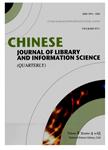Digitizing Dunhuang Cultural Heritage:A User Evaluation of Mogao Cave Panorama Digital Library
Digitizing Dunhuang Cultural Heritage:A User Evaluation of Mogao Cave Panorama Digital Library作者机构:Faculty of EducationThe University of Hong Kong
出 版 物:《Journal of Data and Information Science》 (数据与情报科学学报(英文版))
年 卷 期:2017年第2卷第3期
页 面:49-67页
核心收录:
学科分类:1205[管理学-图书情报与档案管理] 12[管理学] 120501[管理学-图书馆学] 05[文学] 120502[管理学-情报学] 0503[文学-新闻传播学]
基 金:partially supported by Key Technologies Research and Development Program of China for the project titled "Metadata Standard for Cultural Relics Digital Preservation" (project No.: 2014BAK07B02)
主 题:Mogao Caves Cultural heritage Usability Dunhuang Panorama digital library
摘 要:Purpose: This study is a user evaluation on the usability of the Mogao Cave Panorama Digital Library (DL), aiming to measure its effectiveness from the users' perspective and to propose suggestions for improvement. Design/methodology/approach: Usability tests were conducted based on a framework of evaluation criteria and a set of information seeking tasks designed for the Dunhuang cultural heritage, and interviews were conducted for soliciting in-depth opinions from participants. Findings: The results of the usability tests indicate that the DL was more efficient in supporting simple information seeking tasks than those of higher-complexity levels. Statistical tests reveal that there were correlations among dimensions of usability criteria and user effectiveness measures. Moreover, interview discourses exposed specific usability issues of the DL. Research limitations: This research is based on a relatively small sample size, resulting in a limited representativeness of user diversity. A larger sample size is needed for a systematic cross group comparison. Practical implications: This study evaluated the usability of the Mogao Cave Panorama DL and proposed suggestions for its improvement for better experience. The results also provide a reference to other cultural heritage DLs with panorama functions. Originality/value: This study is one of the first evaluating cultural heritage DLs from the perspective of user experience. It provides methodological references for relevant studies: the evaluation framework, the designed information seeking tasks, and the interview questions can be adopted or adapted in evaluating other visually centric DLs of cultural heritage.



